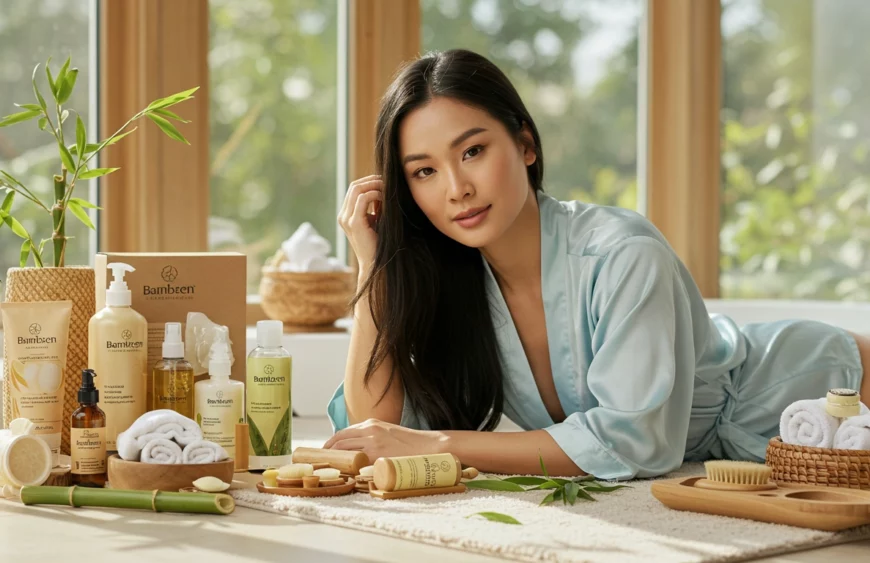Introduction to Natural Lacquer

Introduction to Natural Lacquer in Bamboo Products: Origins, Composition, and Hygiene
1. Natural Hygiene Properties of Lacquer
All-Natural Composition
Natural lacquer is a resin extracted from the sap of lacquer trees. Its main components include urushiol, laccase, and gum. It is a natural product free of harmful chemical toxins, making it inherently safe for human use.
Antibacterial and Antifungal Properties
Urushiol in natural lacquer has inherent antibacterial and antifungal qualities, which prevent the growth of bacteria and mold. This makes it a popular choice for surface treatments of bamboo products like tableware and tea sets.
Historically, lacquered containers were even used to preserve food, such as storing herbs or tea, showcasing its excellent preservation properties.
2. Potential Hygiene Risks
While lacquer is naturally safe, certain conditions can impact its safety:
(1) Incomplete Curing
- Curing Process: Natural lacquer requires time to fully cure through an oxidation and polymerization reaction. Traditional curing methods may take months. If not fully cured, urushiol residues may remain, which can cause allergic reactions upon contact.
- Allergic Reactions:
Uncured lacquer contains urushiol (similar to the allergen in poison ivy), which may cause skin irritation, redness, and itching (commonly referred to as “lacquer rash”).- Solution: Once fully cured, urushiol is oxidized into a stable film, eliminating its allergenic properties.
(2) Use of Synthetic or Poor-Quality Lacquer
- Synthetic Substitutes: Some products on the market use synthetic lacquer (like polyurethane) disguised as natural lacquer. These may contain harmful solvents such as benzene or formaldehyde, posing health risks with prolonged exposure.
- Additives in Poor-Quality Lacquer: Low-quality products may include heavy metals like lead or mercury as pigments, which can result in chronic toxicity.
(3) Improper Application
Poorly executed lacquer application, such as cracked or peeling lacquer films, can trap dirt and foster bacterial growth on bamboo surfaces.
3. Ensuring the Hygiene of Lacquered Bamboo Products
To ensure safe use, consider the following:
(1) Choose Reputable Products
- Opt for bamboo products explicitly labeled as treated with “natural lacquer” or “raw lacquer.” Avoid items with unclear origins or synthetic coatings.
- Pro Tip: Natural lacquer has little to no odor once dried, while synthetic alternatives often emit a sharp, chemical smell.
(2) Confirm Full Curing
- A high-quality lacquered bamboo product will have a smooth, hard surface without stickiness or strong odors, which indicate incomplete curing.
- For newly purchased items, leave them in a ventilated area for a while to ensure the lacquer film is fully oxidized.
(3) Proper Usage Practices
- Food-Contact Products (e.g., bamboo bowls, chopsticks):
- Only use items treated with fully cured natural lacquer.
- Avoid soaking in high-temperature liquids for extended periods, as this can degrade the lacquer film.
- Prevent scratches or damage to the lacquer coating by avoiding sharp utensils.
- Cleaning Tips: Use a soft cloth and mild cleaners, avoiding abrasive or highly acidic/alkaline detergents.
(4) Allergy Awareness
Individuals allergic to urushiol should avoid direct contact with uncured lacquer products. Synthetic resin-coated alternatives may be a safer option.
4. Historical and Modern Applications of Lacquer
Historical Validation: For thousands of years, countries like China, Japan, and Korea have used natural lacquer to treat tableware and furniture. When properly crafted, these lacquered items have proven to be hygienic and durable.
Modern Standards: Bamboo products treated with natural lacquer that comply with regulations such as GB 4806.10-2016 (Coatings for Food Contact) have passed tests for heavy metals and chemical migration, ensuring their safety.
Conclusion
Hygiene Verdict: Natural lacquer is safe, eco-friendly, and provides antibacterial and preservative benefits. However, to ensure safety, it’s crucial that the lacquer film is fully cured, free from harmful additives, and applied using proper techniques.
User Recommendations:
- Choose bamboo products made by reputable manufacturers with natural lacquer.
- Avoid exposure to high heat or sharp tools that may damage the lacquer coating.
- If you’re sensitive to urushiol, avoid direct contact with uncured lacquered items.
When in doubt about a product’s safety, request testing reports for heavy metals and chemical emissions from the seller. Alternatively, opt for bamboo lacquerware crafted using traditional, time-tested methods, such as Fujian lacquerware or Japan’s renowned Wajima-nuri.

